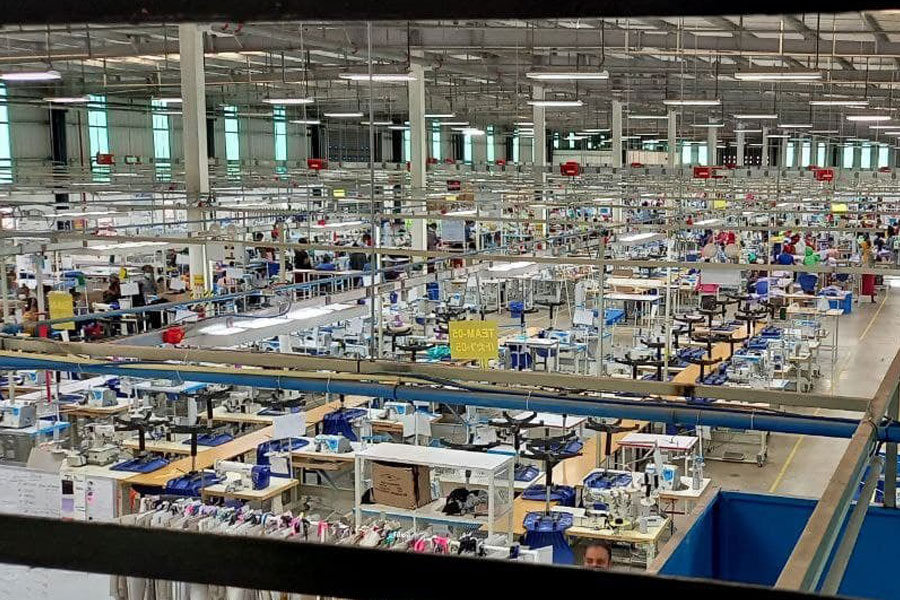
Fortune News | Aug 12,2023
The Federal Transport Authority has introduced a new categorisation for freight trucks based on the number and payload capacity of the trucks, as well as the number of years the vehicle has been in service. The directive also introduces categorisation of trucks under share companies.
In the making for the past two years, the new categorisation divides the existing freight truck operators into two groups: associations and companies. Private limited companies (Plc) and share companies are an addition to sole proprietors classified under companies in the latest directive. Associations are further divided into four levels, while privately-owned companies have up to five categories.
The directive requires an association to have at least 150 freight trucks with payload capacities of at least 30tn each to be regarded as level one. The numbers go down to 100 and 75 trucks for level two and three, respectively. Level four allows a minimum payload capacity of seven tonnes but restricts the operators to intra-country transportation. It also puts in place a minimum requirement of a 30tn payload capacity for a set number of vehicles, mandatory for levels one through three of associations.
Previously, the payload capacity of 30tn and above was only for level one, sub-level one. Freight trucks under sub-level two of the same level were expected to have a payload capacity between 20tn to 29tn.
The directive aims to encourage the creation of share companies and private limited companies, according to Abdulber Shemsu, deputy director at the Authority, who added that there is a transitioning period of six months allotted to implement the draft directive.
"The reasoning behind keeping the association system still in place is to smooth out the transition to private companies," he said. "The categorisation into different levels is also expected to foster competency and increase efficiency in the field."
Customers can assess the capacity of the operators and make a better-informed decision, according to Abdulber.
The directive, which was approved last week, extended the limit on usage years of freight trucks for international transport operators by 10 years to 30.
"The longer the age of the vehicle," said Abdulber, "the higher the costs it will have on the industry as a whole."
These costs could be in the form of spare parts for vehicles, energy consumption, and time wasted on trips when vehicles break down, according to Abdulber.
Representative branch offices for international freight operators, a Global Positioning System (GPS) and speed limiter, and a regular technical evaluation certificate for every vehicle are some of the requirements in place for all operators. There are estimated to be around 13,000 freight trucks and nearly 100 associations in the country.
Following the new mandate for GPS systems and speed limiters on every vehicle, a centralised system to track the real-time location of freight trucks is being developed by the Authority. Freight truck operator associations are also required to implement systems to track truck locations and to ensure the availability of this data to the Authority at all times.
The Authority is holding the second round of training for external parties for the system it is developing.
"We'll launch it in the coming month after incorporating inputs from the training," said Abdulber.
While the directive was in the making, it drew heavy criticism from players in the industry. Among the points in dispute is the minimum requirement of a 30tn payload capacity for a set number of vehicles, mandatory for international transport.
Though there have been multiple stakeholder discussions, the deputy director says that they have not reached a consensus. Efforts also included availing the directive online for 15 days and receiving input through letters from companies, according to the Authority.
Freight truck associations argue that the new law will only divide assets already organised under one management with no foreseeable gains.
Dejene Luche, public relations head for the Ethiopian Transport Operators Federation that has 68 associations and 3,000 trucks under it, states that the new categorisation will disband the current associations in place with no benefit.
"There are no differences in tariff based on the rating," he said. "So what is the incentive behind this classification?"
The new categorisation will scatter the current associations that were grouped based on the last law in 2012, according to Dejene.
"If the aim is to discourage associations," he said, "then why bother with a new grouping method?"
Dejene, who is also president of Yegna Freight Forwarders & Shipping Agents Association, which has 180 freight trucks, questions the strength of implementation as well.
"The age of the cars has been used as one criterion without any means of authentication except the libre [deed]," he said, "which we know can be falsified."
This will lead to classification taking place based on the negotiating power of the operators, according to Dejene, who also mentioned the lack of technical know-how at the Authority.
"The law will only create a disturbance in the industry as it fails to realise the limited resources under it."
An in-depth study needs to take place for the law to achieve its intended purpose, according to Sheway Mehari, a transport management expert at Kotebe Metropolitan University.
"It needs to engage people at the ground level," she said, " and take input from them before implementation."
Though a legal framework can guide a sector toward a particular goal, it should also be open to amendments over time, she explained.
PUBLISHED ON
Nov 07,2020 [ VOL
21 , NO
1071]

Fortune News | Aug 12,2023

My Opinion | May 08,2021

Commentaries | Jan 09,2021

Radar | Jul 21,2024

Sunday with Eden | May 20,2023

Radar | Sep 10,2023

News Analysis | Dec 08,2024

Radar | Jun 24,2023

Fortune News | Oct 15,2022

Fortune News | Jan 28,2023

Dec 22 , 2024 . By TIZITA SHEWAFERAW
Charged with transforming colossal state-owned enterprises into modern and competitiv...

Aug 18 , 2024 . By AKSAH ITALO
Although predictable Yonas Zerihun's job in the ride-hailing service is not immune to...

Jul 28 , 2024 . By TIZITA SHEWAFERAW
Unhabitual, perhaps too many, Samuel Gebreyohannes, 38, used to occasionally enjoy a couple of beers at breakfast. However, he recently swit...

Jul 13 , 2024 . By AKSAH ITALO
Investors who rely on tractors, trucks, and field vehicles for commuting, transporting commodities, and f...

Nov 1 , 2025
The National Bank of Ethiopia (NBE) issued a statement two weeks ago that appeared to...

Oct 25 , 2025
The regulatory machinery is on overdrive. In only two years, no fewer than 35 new pro...

Oct 18 , 2025
The political establishment, notably the ruling party and its top brass, has become p...

Oct 11 , 2025
Ladislas Farago, a roving Associated Press (AP) correspondent, arrived in Ethiopia in...